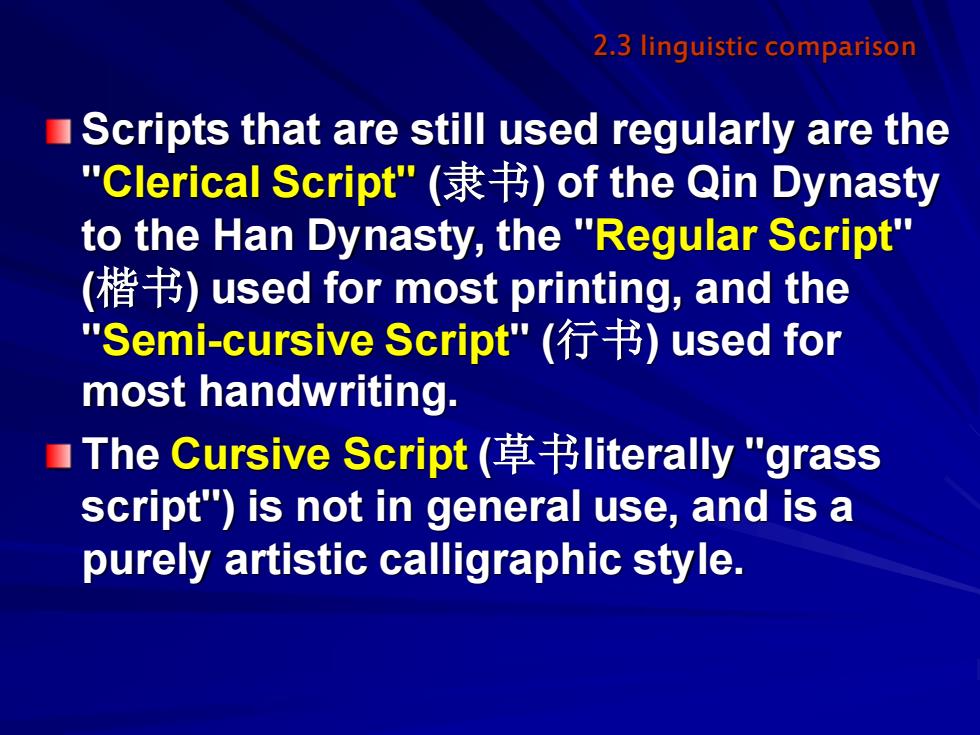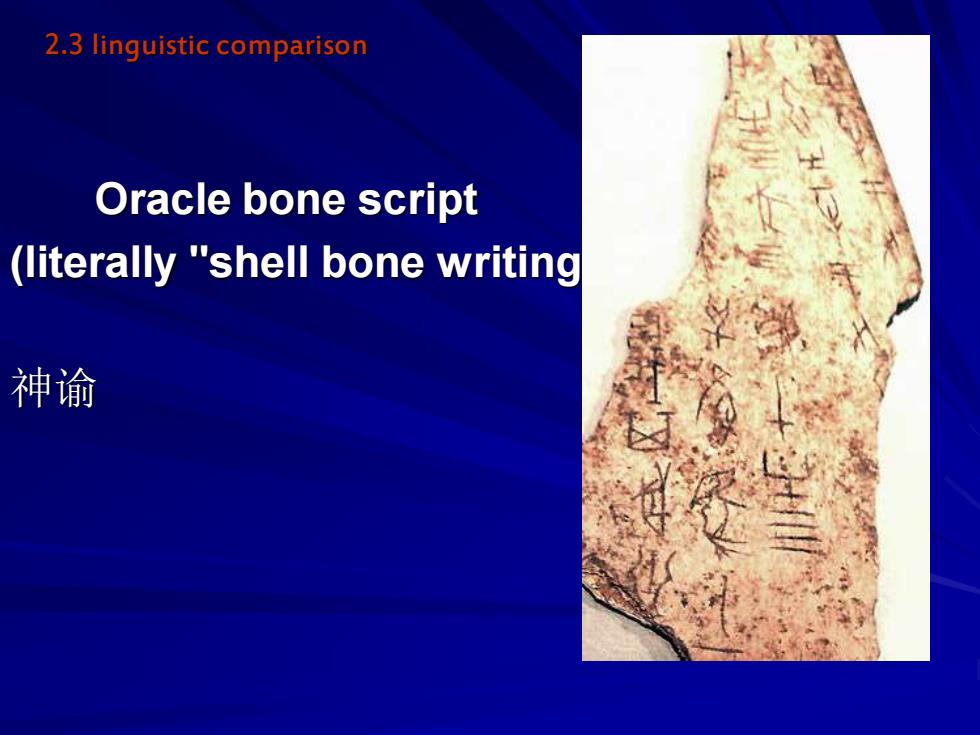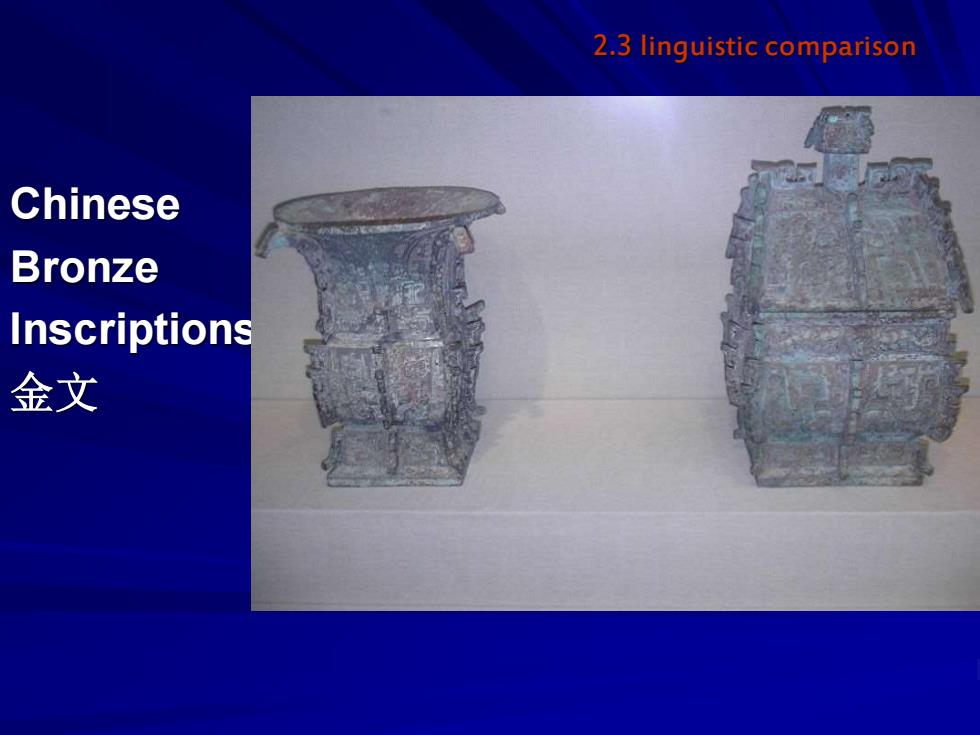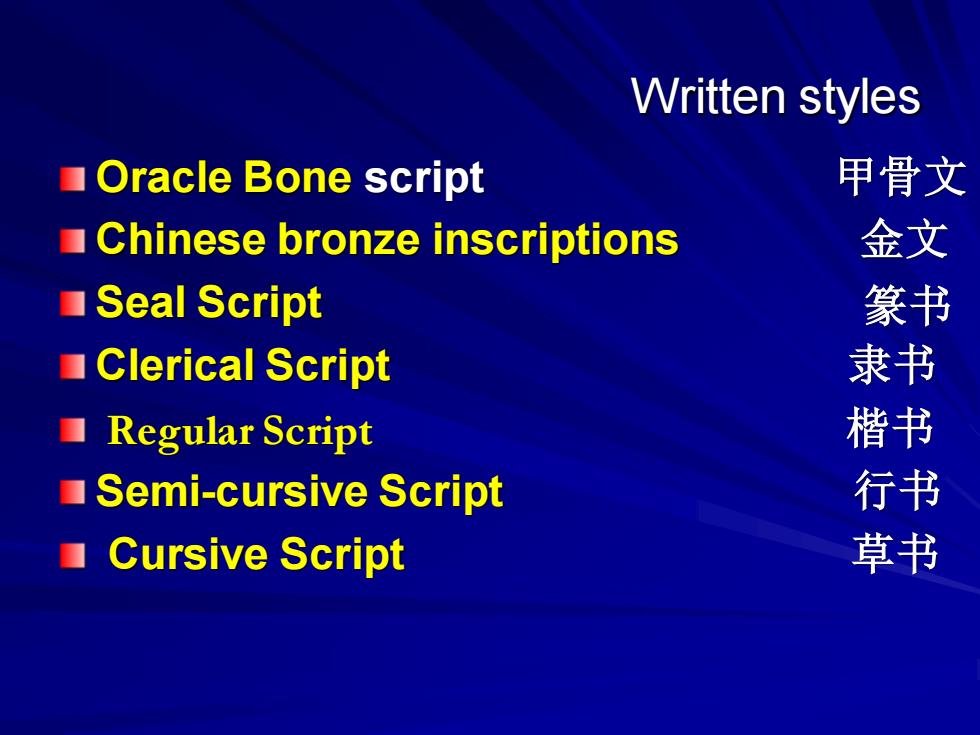
2.3 linguistic comparison Scripts that are still used regularly are the "Clerical Script'"(隶书)of the Qin Dynasty to the Han Dynasty,the "Regular Script" (楷书)used for most printing,and the "Semi-cursive Script'"(行书)used for most handwriting. uThe Cursive Script(草书literally"grass script")is not in general use,and is a purely artistic calligraphic style
Scripts that are still used regularly are the "Clerical Script" (隶书) of the Qin Dynasty to the Han Dynasty, the "Regular Script" (楷书) used for most printing, and the "Semi-cursive Script" (行书) used for most handwriting. The Cursive Script (草书literally "grass script") is not in general use, and is a purely artistic calligraphic style. 2.3 linguistic comparison

2.3 linguistic comparison Oracle bone script (literally "shell bone writing 神谕
Oracle bone script (literally "shell bone writing") 神谕 2.3 linguistic comparison

2.3 linguistic comparison Chinese Bronze Inscriptions 金文
Chinese Bronze Inscriptions 金文 2.3 linguistic comparison

Written styles Oracle Bone script 甲骨文 Chinese bronze inscriptions 金文 Seal Script 篆书 Clerical Script 隶书 Regular Script 楷书 Semi-cursive Script 行书 Cursive Script 草书
Written styles Oracle Bone script 甲骨文 Chinese bronze inscriptions 金文 Seal Script Clerical Script 隶书 楷书 Semi-cursive Script 行书 Cursive Script 草书 篆书 Regular Script

2.3 linguistic comparison Formation of characters p25 The presumed methods of forming characters were first classified by the Chinese linguist Xu Shen,whose etymological dictionary Shuowen Jiezi (说文解字)divides the script into six categories,the lieùshu(六书) [etime'lbd3ikal]语源的
Formation of characters p25 The presumed methods of forming characters were first classified by the Chinese linguist Xu Shen, whose etymological dictionary Shuowen Jiezi (说文解字) divides the script into six categories, the liùshū (六书). [ˌetiməˈlɔdʒikəl] 语源的 2.3 linguistic comparison